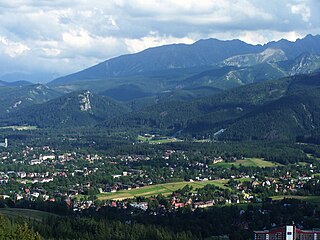
Zakopane is a town in the south of Poland, in the southern part of the Podhale region at the foot of the Tatra Mountains. From 1975 to 1998, it was part of Nowy Sącz Voivodeship; since 1999, it has been part of Lesser Poland Voivodeship. As of 2017 its population was 27,266. Zakopane is a centre of Goral culture and is often referred to as "the winter capital of Poland". It is a popular destination for mountaineering, skiing, and tourism.

The Tatra Mountains, Tatras, or Tatra, are a series of mountains within the Western Carpathians that form a natural border between Slovakia and Poland. They are the highest mountains in the Carpathians. The Tatras are distinct from the Low Tatras, a separate Slovak mountain range further south.

Stanisław Ignacy Witkiewicz, commonly known as Witkacy, was a Polish writer, painter, philosopher, theorist, playwright, novelist, and photographer active before World War I and during the interwar period.

Stanisław Witkiewicz was a Polish painter, art theoretician, and amateur architect, known for his creation of "Zakopane Style".
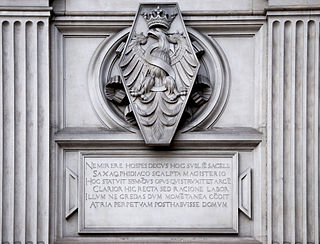
The culture of Poland is the product of its geography and distinct historical evolution, which is closely connected to an intricate thousand-year history. Poland has a Roman Catholic majority, and religion plays an important role in the lives of many Polish people. Polish culture forms an important part of western civilization and the western world, with significant contributions to art, music, philosophy, mathematics, science, politics and literature. Its unique character developed as a result of its geography at the confluence of various European regions.
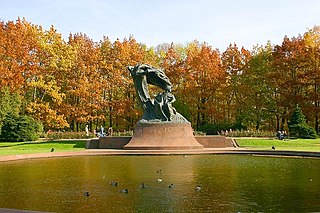
Łazienki Park or Royal Baths Park is the largest park in Warsaw, Poland, occupying 76 hectares of the city center.
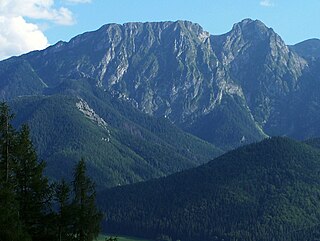
Giewont is a mountain massif in the Tatra Mountains of Poland. Its highest peak, Great Giewont, is 1,894 metres (6,214 ft)1,894 metres (6,217 ft) above sea level and the highest peak of the Western Tatras located entirely within Poland's borders. The mountain is regarded as the symbol of Zakopane, the Polish Tatras and Podhale, which throughout history has been the subject of many legends, poems and works of art.

Morskie Oko, or Eye of the Sea in English, is the largest and fourth-deepest lake in the Tatra Mountains, in southern Poland. It is located deep within the Tatra National Park in the Rybi Potok Valley, of the High Tatras mountain range at the base of the Mięguszowiecki Summits, in Lesser Poland Voivodeship. In 2014, The Wall Street Journal recognized the lake as one of the five most beautiful lakes in the world.

The National Museum in Kraków, popularly abbreviated as MNK, is the largest museum in Poland, and the main branch of Poland's National Museum, which has several independent branches with permanent collections around the country. Established in 1879, the museum consists of 21 departments which are divided by art period: 11 galleries, 2 libraries, and 12 conservation workshops. It holds some 780,000 art objects, spanning from classical archeology to modern art, with special focus on Polish painting.

The Villa Atma in Zakopane, Poland, is a historic chalet housing the Karol Szymanowski Museum, department of the National Museum in Kraków.

The architecture of Poland includes modern and historical monuments of architectural and historical importance.

The Grand Hotel Kempinski High Tatras is a five-star hotel operated by Kempinski Hotels S.A. located on the shores of Štrbské pleso in High Tatras, Slovakia.

Zakopane Style is an art style, most visible in architecture, but also found in furniture and related objects, inspired by the regional art of Poland's highland regions, most notably Podhale. Drawing on the motifs and traditions in the buildings of the Carpathian Mountains, this synthesis was created by Stanisław Witkiewicz who was born in the Lithuanian village of Pašiaušė, and is now considered to be one of the core traditions of the Goral people.

Saldutiškis is a small town in northeastern Lithuania. According to the Lithuanian census of 2011, it had 343 residents.

Art in Poland refers to all forms of visual art in or associated with Poland.
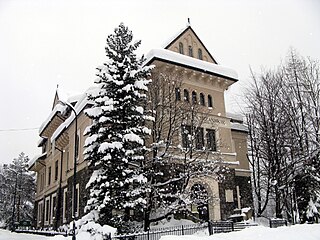
The Tatra Museum is a museum of the history, culture, nature and ethnography of the Polish Tatras; its main branch is located in Zakopane, Poland.

Sabała or Sablik was a Goral amateur musician, storyteller and folk singer active in or around the Tatra Mountains. A friend to many renowned Polish artists of the late 19th century, he is featured in numerous Polish works of art of the epoch.

Klemens "Klimek" Bachleda was a pioneering Polish mountain guide and mountain rescuer in Austria-Hungary. He died during an unsuccessful mountain rescue attempt in the High Tatras.

Rafał Marceli Ludwik Fortunat Józef Malczewski was a Polish landscape and portrait painter, draughtsman, author and columnist. He was a noted Tatra mountaineer, skier and populariser of the Tatra Mountains.

Zbigniew Uniłowski was a Polish writer.























